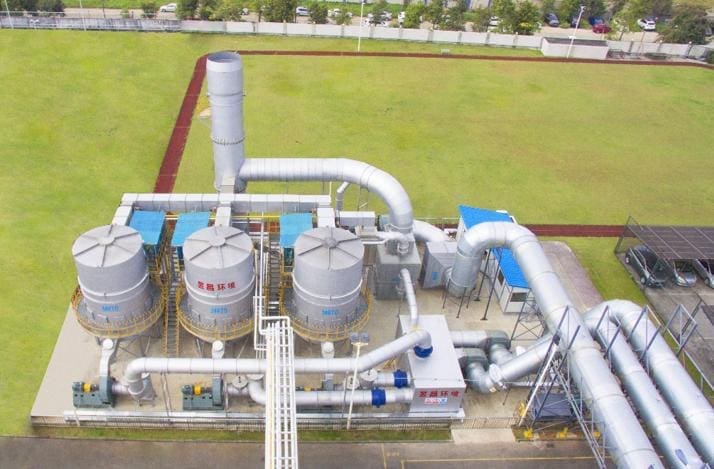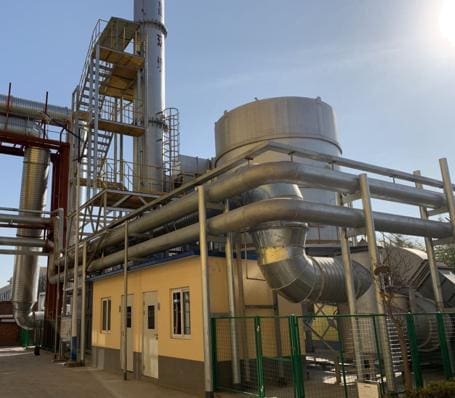Introduction to Regenerative Thermal Oxidizer Systems
Choosing the right air pollution control system is crucial for any business committed to reducing its environmental impact and complying with regulatory standards. Regenerative Thermal Oxidizers (RTOs) are among the most effective solutions. These systems offer the highest VOC removal efficiency while minimizing energy consumption. With their superior performance and energy-saving capabilities, RTOs have become the technology of choice for various industries, from chemical manufacturing to automotive production.
In this article, we will explore why businesses should choose RTOs, their advantages, and how they can help businesses save costs and protect the environment.

Key Reasons for Choosing an RTO
- High Removal Efficiency: One of the key advantages of RTO systems is their removal efficiency of up to 99%. Achieving such high removal efficiency when treating volatile organic compounds (VOCs) and hazardous air pollutants (HAPs) is crucial for meeting environmental compliance requirements and ensuring that hazardous pollutants are not released into the atmosphere.
- Energy Efficiency: RTO (Reactive Thermal Oxidizer) excels in energy efficiency. The heat generated during oxidation is collected and reused to preheat incoming contaminated air. This energy recovery process reduces fuel consumption and operating costs. Compared to traditional thermal oxidizers, RTO systems are extremely cost-effective, especially for businesses in regions with high energy costs.
- Cost Savings: In addition to energy savings, the high efficiency of RTOs means businesses can reduce operating costs in the long run. By minimizing fuel consumption and efficiently removing pollutants, RTOs offer excellent value for money and a rapid return on investment.
- Low Maintenance Costs and Durability: RTOs are designed for durability and long service life. The ceramic media used inside the system can withstand high temperatures and requires minimal maintenance for many years. With automated monitoring and maintenance capabilities, RTO systems are easy to maintain, requiring less human intervention, thus reducing downtime and lowering operating costs.
- Compliance with Stringent Regulations: Increasingly stringent environmental regulations are facing various industries, especially in countries such as the United States, Germany, and Brazil. RTO systems meet stringent emission standards set by regulatory agencies such as the US Environmental Protection Agency (EPA) and EU directives. This ensures companies avoid hefty fines and comply with environmental laws.
 Customer Testimonials
Customer Testimonials
“Since installing the RTO system in our pharmaceutical plant, our energy costs have significantly decreased, and we are better compliant with environmental standards. It was a wise long-term investment.” — Sarah, Sustainability Manager, UK Pharmaceutical Plant
 “The RTO system has revolutionized how we control emissions at our production facility. We not only meet government standards but also save on energy costs.” — Michael, Operations Director, Spanish Automotive Plant
“The RTO system has revolutionized how we control emissions at our production facility. We not only meet government standards but also save on energy costs.” — Michael, Operations Director, Spanish Automotive Plant
Frequently Asked Questions
Q: How does an RTO (Reactive Thermal Oxidizer) differ from a traditional thermal oxidizer?
A: Unlike traditional thermal oxidizers, RTOs are equipped with a heat recovery system that recovers energy from exhaust gases, thereby reducing the need for additional fuel and improving overall efficiency.
Q: What is the lifespan of an RTO?
A: RTO systems are designed for long-term use and, with proper maintenance, can last 15-20 years.
Q: Which industries benefit from RTO systems?
A: Industries such as chemical manufacturing, automotive, food processing, and pharmaceuticals benefit from RTO systems due to their high efficiency in treating VOC (volatile organic compound) emissions.
Q: Can RTO systems be customized?
A: Yes, RTO systems can be customized based on the volume of air to be treated, emission levels, and specific operational requirements.
Q: Can RTOs be used for high-flow-rate applications?
A: Yes, RTO systems are designed to handle both high and low flow rates, making them suitable for a wide range of industrial applications.
 Customer Testimonials
Customer Testimonials